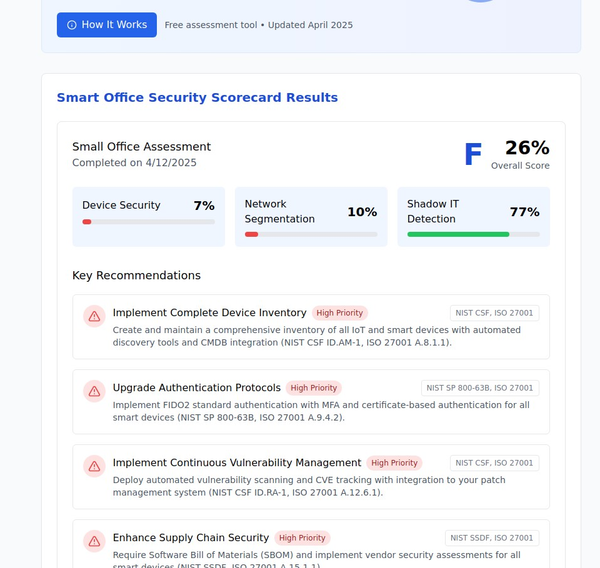Securing Remote Work: Best Practices for IoT Devices

Introduction
The rise of remote work has been accompanied by an increased reliance on Internet of Things (IoT) devices to maintain productivity and connectivity. While these devices offer numerous benefits, they also introduce new security challenges. As more employees work from home, securing IoT devices becomes crucial to protecting sensitive data and maintaining the integrity of corporate networks. This article explores the best practices for securing IoT devices in remote work environments.

Challenges of Securing IoT Devices in Remote Work
Increased Attack Surface: Remote work significantly expands the attack surface for cyber threats. Employees using personal networks and devices can inadvertently introduce vulnerabilities that cybercriminals can exploit.
Lack of Centralized Control: Managing IoT device security becomes challenging without centralized IT control. Ensuring consistent security practices across various home networks is difficult.
Varying Security Standards: Remote workers may have different levels of understanding and adherence to security practices, leading to inconsistent protection for IoT devices.
Best Practices for Securing IoT Devices
Implement Strong Authentication: Using strong, unique passwords and multi-factor authentication (MFA) for IoT devices is essential. MFA adds an extra layer of security, making it harder for unauthorized users to gain access.
Regular Firmware Updates: Keeping IoT devices updated with the latest firmware and security patches is critical. Manufacturers often release updates to address vulnerabilities, so regular updates can prevent exploitation of known issues.
Secure Network Connections: Ensure that all IoT devices use secure, encrypted network connections. Virtual Private Networks (VPNs) can provide an additional layer of security by encrypting internet traffic and protecting data from interception.
Device Isolation: Isolate IoT devices on separate networks to minimize risk. This practice prevents compromised devices from affecting other network-connected devices.
Endpoint Security Solutions: Use endpoint security solutions to protect IoT devices from malware and other threats. These solutions can detect and mitigate security risks, ensuring that devices remain secure.
Regular Security Audits: Conduct regular security audits to identify and mitigate vulnerabilities in IoT devices. Regular assessments help maintain a robust security posture and address emerging threats.
Steps to Implement Best Practices
Assess Security Needs: Conduct a thorough assessment of the security needs for remote work environments. Identify potential vulnerabilities and prioritize areas that require immediate attention.
Develop Security Policies: Create comprehensive security policies that address the use of IoT devices in remote work. These policies should outline best practices, acceptable use, and response procedures for security incidents.
Educate Remote Workers: Provide training and resources to educate remote workers on IoT security best practices. Empower employees with the knowledge to recognize and respond to potential threats.
Deploy Security Tools: Implement security tools and solutions to enforce security policies and protect IoT devices. Tools such as VPNs, firewalls, and endpoint security solutions can enhance protection.
Monitor and Update: Continuously monitor the security of IoT devices and update policies and tools as needed. Stay informed about the latest threats and adjust security measures accordingly.
Case Studies
Example 1: A technology company implemented strong authentication, regular firmware updates, and secure network connections for their remote workforce. This proactive approach led to a significant reduction in security incidents and improved overall data protection.
Example 2: A healthcare organization faced challenges with varying security standards among remote workers. By developing comprehensive security policies and providing regular training, they successfully improved the security of IoT devices and protected sensitive patient data.
Best Practices for Continuous Improvement
Stay Informed: Encourage staying informed about the latest IoT security threats and best practices. Regularly review industry publications, attend webinars, and participate in professional networks.
Foster a Security Culture: Emphasize the importance of fostering a culture of security awareness among remote workers. Regularly communicate the importance of security and share tips for maintaining safe practices.
Regular Training: Recommend regular training sessions to keep remote workers updated on security practices. Continuous education ensures that employees remain vigilant and informed about new threats.
Conclusion
Securing IoT devices in remote work environments is essential for protecting sensitive data and maintaining the integrity of corporate networks. By implementing strong authentication, regular updates, secure network connections, and other best practices, organizations can mitigate risks and enhance their security posture. As cyber threats continue to evolve, ongoing vigilance and proactive measures are crucial for maintaining a secure remote work environment.
Call to Action
Have you implemented security measures for IoT devices in your remote work setup? Share your experiences and any tips in the comments below. For more detailed guides on IoT security, check out our additional resources IoT Smart Office and Remote Working Risks: A Guide.





